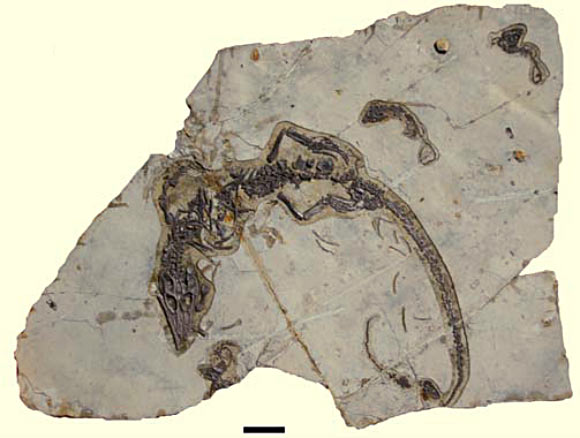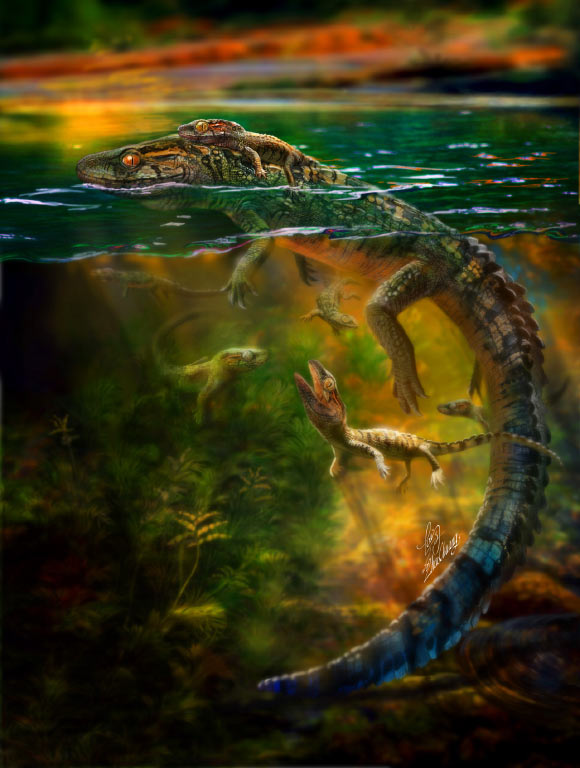A well-preserved fossil from the Yixian Formation of western Liaoning Province, China, represents the oldest record of post-natal parental care, according to a new study led by Dr Junchang Lu from the Chinese Academy of Geological Sciences’ Institute of Geology.
Post-natal parental care seems to have evolved numerous times in vertebrates, with evidence of a long evolutionary history in diapsids – a group of amniotes which developed holes in each side of the skull about 300 million years ago and from which all existing lizards, snakes and birds are descended.
However, evidence of this behavior is extremely rare in the fossil record and is only reported for pelycosaurs and two types of dinosaurs.
The new study, published in the Geosciences Journal, presents evidence of post-natal parental care in Philydrosaurus, a semi-aquatic diapsid reptile that lived in what is now China during the Middle Jurassic.
The specimen Dr Junchang Lu and his colleagues found is an apparent family group with an adult, surrounded by six juveniles of the same species.
Given that the smaller individuals are of similar sizes, the paleontologists interpreted this as indicating an adult with its offspring, apparently from the same clutch.

Philydrosaurus: adult and juveniles. Scale bar – 5 cm. Image credit: Junchang Lu et al.
“That Philydrosaurus shows parental care of the young after hatching suggests protection by the adult, presumably against predators. Their relatively small size would have meant that these reptiles were probably exposed to high predation pressure and strategies, such as live birth, and post-natal parental care may have improved survival of the offspring,” said co-author Dr Charles Deeming from the University of Lincoln, UK.
“This specimen represents the oldest record of post-natal parental care in diapsids to our knowledge and is the latest in an increasingly detailed collection of choristoderes exhibiting different levels of reproduction and parental care.”
“A test of whether post-natal parental care is an ancestral behavior that has persisted in the evolutionary development of amniotes will depend on future fossil discoveries.”
_____
Junchang Lu et al. Post-natal parental care in a Cretaceous diapsid from northeastern China. Geosciences Journal, published October 20, 2014; doi: 10.1007/s12303-014-0047-1








